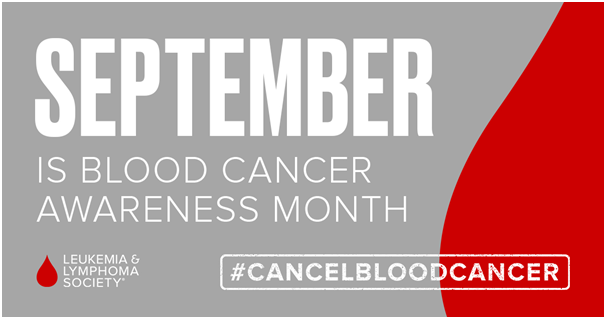
by Admin | Sep 8, 2021 | Uncategorized
– by Pirunrat Nathchayanonth (Yori), Client Coordinator

When I was a child, almost all the soap operas I watched involved tragic scenario of someone having untreatable Leukemia. Little did I know that one day my father will be diagnosed with Lymphoma.
As September is Leukemia and Lymphoma Awareness Month, let’s learn more about these conditions.
Firstly, what are the differences?
“Leukemia is a cancer of the blood and bone marrow.” – Cleveland Clinic (https://my.clevelandclinic.org/health/diseases/4365-leukemia)
Leukemia symptoms are often overlooked due to its similarity with flu or other common illness. So far, scientists still haven’t figured outwhat exactly cause Leukemia, but they know how it’s formed.
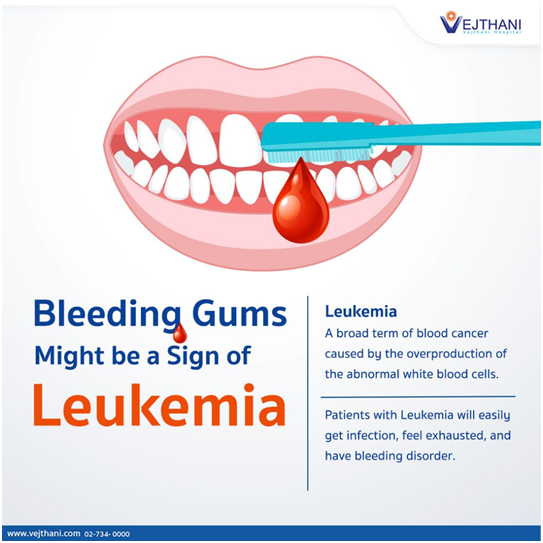
There are different types of Leukemia below and you can read more here: https://www.mskcc.org/cancer-care/types/leukemias/types
- Hairy Cell Leukemia (HCL)
- Acute Lymphocytic Leukemia (ALL)
- Acute Myeloid Leukemia (AML)
- Acute Promyelocytic Leukemia (APL)
- Chronic Lymphocytic Leukemia (CLL)
- Chronic Myeloid Leukemia (CML)
- Myeloproliferative Neoplasms (MPN)
- Systemic Mastocytosis.
“Lymphoma is a cancer of the lymphatic system, which is part of the body’s germ-fighting network.” – Mayo Clinic (https://www.mayoclinic.org/diseases-conditions/lymphoma/symptoms-causes/syc-20352638)
The cause of Lymphoma is also unspecific. You have it because your white blood cells called lymphocytes double themselves in hazardous level. And also not all Lymphomas are the same, I knew my dad has it but then apparently there are 6 different Lymphomas. But according to Cancer Council (https://www.cancer.org.au/cancer-information/types-of-cancer/lymphoma), there are two main types of lymphoma, which spread and are treated differently:
- Non-Hodgkin lymphoma (which accounts for about 90% of lymphomas)
- Hodgkin lymphoma (which has a characteristic appearance in biopsies).
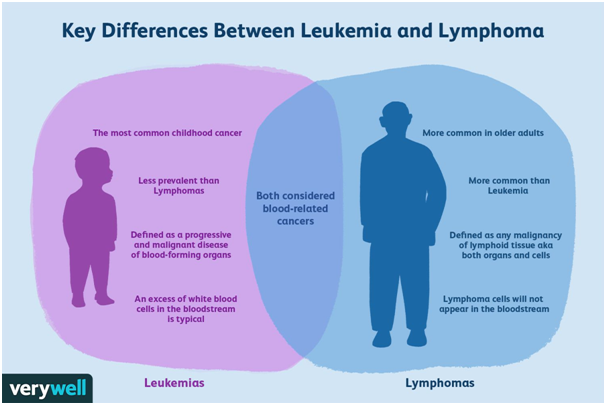
Both may seem similar but “the main difference between lymphocytic leukemias and lymphomas is that in leukemia, the cancer cells are mainly in the bone marrow and blood, while in lymphoma they tend to be in lymph nodes and other tissues.” – explained by American Cancer Society (https://www.cancer.org/cancer/chronic-lymphocytic-leukemia/about/what-is-cll.html)
Comprehensive Cancer Center (https://cccnevada.com/understanding-warning-signs-leukemia-lymphoma/) gave us some warning signs below –
- Loss of appetite or sudden weight loss. – Many of other illness includes this, even simple one like hormonal imbalance! So how can you tell?
- Bone or joint pain. – hmmm? Arthritis?
- Headaches. – Oh dear, this doesn’t mean every time it happens you have to jump the gun, right?
- Shortness of breath. – Are you a smoker? Do you experience panic attacks? Asthmatic patients?
- Frequent infections. – Pneumonia and bladder infection and also happen more than once.
- Easy bruising or heavy bleeding. – This also relate to other blood disease like hemophilia or von Willebrand disease
As mentioned, these are signs and symptoms that are very common and many illnesses. My dad was always exhausted and had high temperature quite often with no other fly symptoms though. But because he was a contractor so we just thought it was because of long exposure to external environment at work. Maybe it wasn’t fever but he had heat exhaustion and such.
He’s always been skinny and a heavy smoker so every now and then he would lose his appetite. He also has hemophilia and got sick regularly from childhood. There’s a period when he would complain about constant headache but again, he didn’t sleep as much because of all those projects he was working on. My mom’s brother was the one who forced him to go see a doctor and by the time he was diagnosed, the oncologist told us he had about 6 months left.
Everything changed then. He refused chemotherapy and for 3 years he turned vegetarian. He moved from Bangkok to Chiang Mai to be in a more tranquil atmosphere away from all the stress. It has been a 17 year stretch since then. Although he’s not 100% healthy, his diet proved to be doing some kind of magic.
One of my friends also had Hodgkin lymphomawas diagnosed last September. With regular chemotherapy and radiotherapy, she is now cancer free and living a stronger life!
But if the signs and symptoms are so common, when do you think you need to see a doctor? When those symptoms happen together and/or more frequent than they should be.
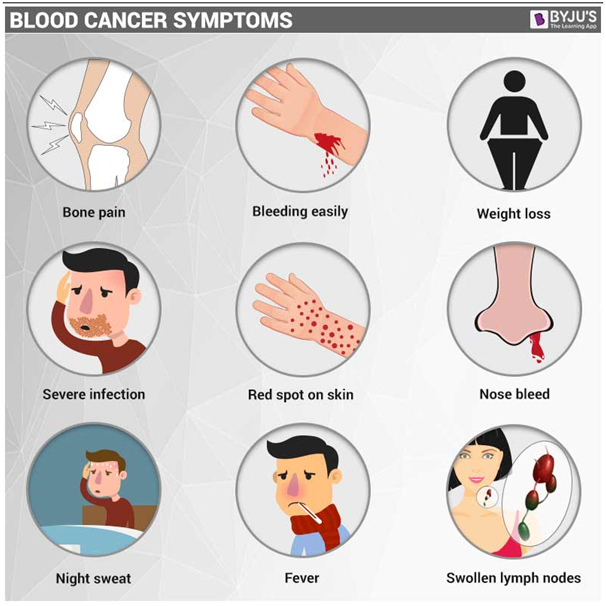
In case, you’re wondering – “my family has a history of both, how can I know for sure?” – not to worry, we got you covered! Our partners offer genetic screenings, so if you are categorized as high risk, you can consult with specialist and plan your journey well in advance.
Reference
https://www.medicinenet.com/bleeding_easily/symptoms.htm
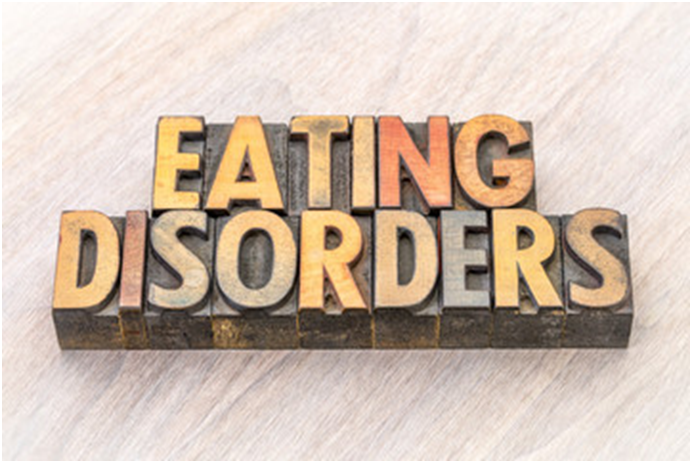
by Admin | Sep 1, 2021 | Uncategorized
– by Pirunrat Nathchayanonth (Yori), Client Coordinator

In recent years society has become more aware of eating disorder issues and the role it plays for majority of young women all over the world. The trend is changing and we can see that many reputable brands are rid of their skinny models and started to promote more common body images. But when we mention “eating disorders” what does it mean?
Mayo Clinic (https://www.mayoclinic.org/diseases-conditions/eating-disorders/symptoms-causes/syc-20353603) defines eating disorders as “serious conditions related to persistent eating behaviors that negatively impact your health, your emotions and your ability to function in important areas of life.Most eating disorders involve focusing too much on your weight, body shape and food, leading to dangerous eating behaviors. These behaviors can significantly impact your “bones, and teeth and mouth, and lead to other diseases.”
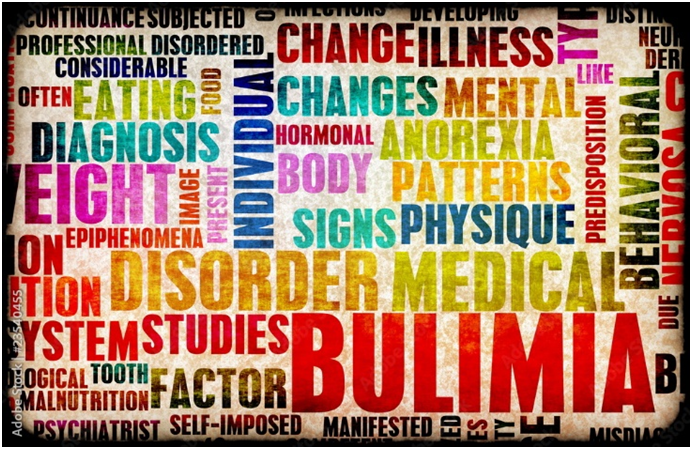
According to Healthline (https://www.healthline.com/nutrition/common-eating-disorders) there are 6 common eating disorders
- Anorexia – “People with anorexia nervosa may limit their food intake or compensate for it through various purging behaviors. They have an intense fear of gaining weight, even when severely underweight.”
- Bulimia – “People with bulimia nervosa eat large amounts of food in short periods of time, then purge. They fear gaining weight despite being at a normal weight.”
- Binge eating – “People with binge eating disorder regularly and uncontrollably consume large amounts of food in short periods of time. Unlike people with other eating disorders, they do not purge.”
- Pica – “Individuals with pica tend to crave and eat non-food substances. This disorder may particularly affect children, pregnant women, and individuals with mental disabilities.”
- Rumination – “Rumination disorder can affect people at all stages of life. People with the condition generally regurgitate the food they’ve recently swallowed. Then, they chew it again and either swallow it or spit it out.”
- Avoidant/restrictive food intake – “ARFID is an eating disorder that causes people to undereat. This is either due to a lack of interest in food or an intense distaste for how certain foods look, smell, or taste.”
With Covid-19 and working from home, you might find it more difficult to control your diet; whether it be overeating from stress (binge) or simply an imbalanced diet because of dependence on food delivery.
Confession, I binge eat sometimes on a bad day and to admit it is purely emotional related and in my younger days I did a bit of ARFID in order to lose weight as well.
But there is a road to recovery.

NEDA (https://www.nationaleatingdisorders.org/treatment) – “It is important that people with eating disorders seek professional help. There are differing approaches to treatment and no one-size-fits-all approach. Since there is not one approach that is considered superior for everyone, it is important to find the option that works for you. Coming armed with a list of questions to ask a potential provider can help you make that choice.”
It is no doubt that this also concerns your Mental Health and vital nutrients that’s important for your wellness that both should work in sync in order to help you overcome it.
Back to current date and Covid-19 situation, I find that most people share two extremes– either we are eating consciously more healthier or we spiral into the imbalanced diet of food delivery. I, for one, hasn’t cooked a decent dish for myself in a long time. Other than the boredom of isolation, a few personal reasons include
1. My condo’s pantry is too small to cook anything properly
2. The smallest portion I cook would normally last a few days, and I definitely know I don’t want to eat the same leftovers for 5 times
3. It is much more economically friendly to me to buy ready-meals compared to how much I spend buying groceries from supermarket
I’m not too proud of this as I used to enjoy cooking in a previous place where I have a full kitchen and can whip up anything I like from soup to proper Sunday Roast. More importantly, when I was able to see my friends from time to time to share our own famous recipe.
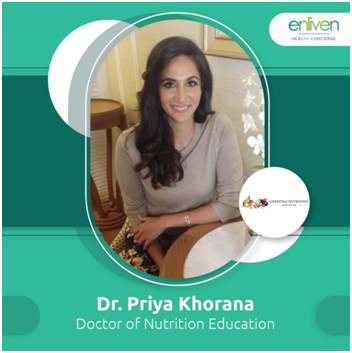
I don’t know if it’s the lockdown stress or is it because the MSG in all the meals I have ordered in the last few months, but I have been experienced acid reflux or medically named GERD for a while now. It came to a point where my relationship with food is in a bad place and when I say I struggle with it, you probably can’t imagine how much.
But after a conversation with Dr.Priya, our nutritionist from Lifestyle Nutrition who’s been helping many of our clients with their nutrition and diet journeys, I feel better knowing that mine can be improved by planning my meals properly in ways that is more suitable for individuals who are in solitude of lockdown like I am.
Dr.Priya offers personalized diet advice based on your goals and needs, and encourages encompassing a well-rounded lifestyle change which also includes exercise. Getting the right guidance from an expert is always the best to help shape and improve your health. Let us help you! Contact us now and we will connect you to this amazing lady 😊.

by Admin | Aug 23, 2021 | Uncategorized
– by Pirunrat Nathchayanonth (Yori), Client Coordinator
I’m not a mother yet myself, but many of my friends are having children and they all say one thing in common – the most crucial stages of your child’s development is between born and 3 years old.
Other than worrying about how much liquid gold you can produce, after 6 months your baby will likely be ready to have some form of solid food with sufficient nutrients.

What are nutrients and why are they good for you?
Nutrients are the substances in food that our bodies process to enable it to function. Your nutrient requirements are influenced by factors including your age, growth stage and activity. Nutrients are so small that the naked eye can’t see them.
Nutrients can generally be broken into two categories:
- macronutrients – carbohydrates, protein, fats; and
- micronutrients – vitamins and minerals such as calcium, iron, vitamin C.
Macronutrients make up a majority of our diets and provide energy for us to move and function. Micronutrients, on the other hand, are chemical substances that we require in small amounts for healthy growth and development.
THE IMPORTANCE OF CARBOHYDRATES FOR YOUNG CHILDREN
Carbs fuel your child’s metabolism, feed their brain and are vital for the development of the nervous, immune, and digestive systems. They are also a quick energy source.
Ways to include carbohydrates in your child’s diet:
- Fresh fruit
- Carrot, cucumber, capsicum and celery as veggie sticks
- Rolled oat porridge
- Roasted potato or sweet potato
- Sourdough or rye bread
- Legumes
- Pasta
- Whole grains such as wild rice, millet, quinoa and barley

THE IMPORTANCE OF PROTEINS FOR YOUNG CHILDREN
Protein is required to build cell and tissue structure, for muscle function, hormone signaling, the transport of blood, to build antibodies and for the digestion of food. Protein is also important for your child’s energy levels and sleeps quality.
Protein is made up of 20 amino acids. Of these, 9 are essential, meaning the body can’t make them and you will have to get them from your diet. You will find a wide variety of “complete” protein sources in animal products such as meat, fish, eggs and dairy products. “Incomplete” protein, on the other hand, are protein-containing plant foods such as legumes, nuts, seeds and quinoa. Both can have their place in a healthy diet.
For vegetarian and vegan children, including a variety of incomplete protein sources throughout the day will help ensure your child has an adequate protein intake. Depending on the rest of your child’s diet, you may need supplementation (particularly vegans). Best to speak to your health practitioners such as a pediatrician or nutritionist before embarking on their restrictive diets to avoid any essential nutrient deficiencies.
Ways to include protein in your child’s diet:
- Eggs
- Greek yogurt
- Quinoa porridge
- Chia pudding with nuts and seeds
- Hummus
- Chicken casserole
- Roast vegetables
- Meatballs

THE IMPORTANCE OF FAT FOR YOUNG CHILDREN
Fats are an essential component of healthy eating and are required for your child’s growth and energy. They’re used to build neural tissue for the nervous system, to make hormones and for the absorption of fat-soluble vitamins. Fats also give food flavor, texture and help to provide satiety.
There are three main types of fats: unsaturated (monounsaturated, polyunsaturated and omega-3 fatty acids), saturated and trans fats.
To remove the confusion about what type of fat your child should consume, we recommend you stick with natural forms of fat across the food groups and avoid fried foods and highly processed snack foods. Look past the low-fat yogurts, as well as vegetable and seed oils.
Ways to include fat in your child’s diet:
- Avocado on crackers
- Greek or coconut yogurt with nuts and seeds
- Hard cheeses
- Salmon with veggies
- Veggies drizzled with olive oil
- Guacamole or hummus
- Smoothie with avocado or coconut milk
- Tinned tuna

Why Micronutrients Matter
Micronutrients, also called vitamins and minerals, are key to helping infants and children grow, learn, and thrive. Facts about six essential nutrients are outlined here.
Iron helps develop the brain of a fetus and child. Iron deficiency is a leading cause of anemia which can result in poor fetal growth, preterm birth, or low birth weight. In addition, iron deficiency limits physical productivity and work capacity.
 Iron helps develop the brain of a fetus and child. Iron deficiency is a leading cause of anemia which can result in poor fetal growth, preterm birth, or low birth weight. In addition, iron deficiency limits physical productivity and work capacity.
Iron helps develop the brain of a fetus and child. Iron deficiency is a leading cause of anemia which can result in poor fetal growth, preterm birth, or low birth weight. In addition, iron deficiency limits physical productivity and work capacity.
 Folate is a general term for many different forms of vitamin B9, which is essential in the earliest days of fetal growth. Folic acid, the form of folate found in supplements and fortified foods, is the only form shown to prevent serious birth defects of the brain, spinal cord, and skull. These birth defects are often preventable if women get enough folic acid before and during early pregnancy.
Folate is a general term for many different forms of vitamin B9, which is essential in the earliest days of fetal growth. Folic acid, the form of folate found in supplements and fortified foods, is the only form shown to prevent serious birth defects of the brain, spinal cord, and skull. These birth defects are often preventable if women get enough folic acid before and during early pregnancy.
 Vitamin A supports healthy eyesight and immune system functions. Children who are deficient face an increased risk of blindness and death from infections such as measles and diarrhea.
Vitamin A supports healthy eyesight and immune system functions. Children who are deficient face an increased risk of blindness and death from infections such as measles and diarrhea.
 Iodine is also required during pregnancy and early infancy for brain and cognitive development. Iodine deficiency can lead to developmental delays and is the most common cause of preventable mental retardation.
Iodine is also required during pregnancy and early infancy for brain and cognitive development. Iodine deficiency can lead to developmental delays and is the most common cause of preventable mental retardation.
 Zinc promotes immunity, resistance to infection, proper growth and development of the nervous system. This mineral is also important for healthy pregnancies.
Zinc promotes immunity, resistance to infection, proper growth and development of the nervous system. This mineral is also important for healthy pregnancies.
 Vitamin D is essential for bone health as well as muscle and nerve functions. Vitamin D also helps the immune system fight off bacteria and viruses.
Vitamin D is essential for bone health as well as muscle and nerve functions. Vitamin D also helps the immune system fight off bacteria and viruses.

Take into consideration of macro and micronutrients as aforementioned so you can have their meals prep guaranteed to be rich and deliciously suitable for them.
However, every child develops differently, and we encourage you to consult your child’s pediatrician or nutritionist for more details and what will be most effective for your beloved pumpkins.
Let us know if we can be your assistance. We are always here to help!

by Admin | Aug 17, 2021 | Uncategorized
Repost from our partner Bumrungrad International Hospital

Office syndrome is a common problem found amongst office workers, those who regularly use a desktop or laptop computer, and those who frequently use tablets or smartphones. Prolonged work along with physical stress and poor postures such as standing or sitting hunched over, keeping the head tilted down, or pushing the shoulders forward can produce aches and pains throughout the body. If we do not correct or treat these pains, they can increase and become chronic issues.
What are some of the symptoms of office syndrome?
Some symptoms include:
-
- Shoulder, neck, and back pain
- Headaches
- Wrist and finger pain
- Numbness of the fingers, hands, or arms
- Back and hip stiffness
- Abdominal pain, discomfort
- Sleeplessness
- Dry eyes
Stretches to prevent office syndrome:
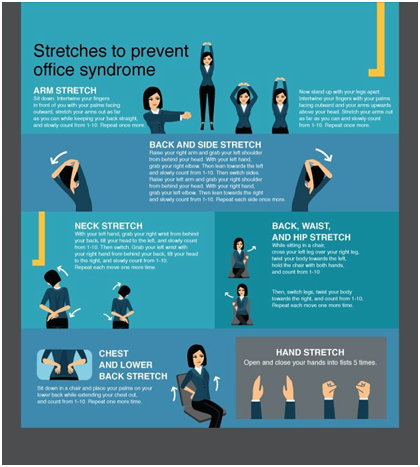
Treating Office Syndrome
Office syndrome is treatable and curable but requires the full cooperation of the patient. This includes making lifestyle adjustments both in the workplace and at home. Oftentimes it also requires assistance from a specialist who can properly guide the patient through the necessary steps towards recovery. There are a variety of treatment options for office syndrome, which include:
Dry needling, which is the medical procedure that involves inserting needles into the areas of muscle spasm that are in pain. The goal is to target the myofascial trigger points to alleviate the pain and make the muscles relax.
Peripheral magnetic stimulation (PMS) or transcutaneous magnetic stimulation (TMS) is a non-invasive method in which a rapidly pulsed, high-intensity magnetic field is delivered to the pained area. This helps to reduce pain and muscle spasms, and strengthen the affected muscle.
Physical therapy (PT) and exercises are the classic method. With assistance from Bumrungrad’s physical therapists and physical trainers, individualized physical therapy and exercise programs can be developed to help speed up the treatment phase and recovery process, as well as ensure that recurrence won’t be a concern.
The Sports Medicine & Lifestyle Center at Bumrungrad International Hospital offers treatment programs that are designed to suit each individual patient’s needs. The team of experienced specialists offer quality services to help ensure that you can return to a normal life without having to worry about your office syndrome symptoms. Contact us now to make your appointment for Office Syndrome at Bumrungrad. We are here to help

by Admin | Aug 9, 2021 | Uncategorized
– by Pirunrat Nathchayanonth (Yori), Client Coordinator

Times have changed for how to plan a trip asCOVID requirements dominate most destinations. I used to be able to just grab my bag, book a last-minute ticket and hop on the plane with little to worry about. Right now? Even going to visit my family who lives a 30 minutesdrive away needs a strategy!
These days your passport and your visa can only get you so far. Without a COVIDnegative result, it is almost impossible for you to go anywhere! And with the situation in Thailand now where new cases rising every day, getting your PCR testing appointment could be a challenge– many hospitals have stopped offering the service due to overwhelm of the system.

Don’t worry about it though, we are here to help! If you allow us enough time (preferably 3-5 days before you need the results), we can help you plan your well-time appointment that guarantees your result will be ready at your expected time frame. This varies between 24-48hours. We don’t need much, just your passport copy and flight booking, so you can leave your worries with us and continue on packing your bags and prepping your shopping list. All you need to do is show up for your test.

However, with the current climate, we can only accommodate the international flight travelers only, and forsame day test results we require a little more advance booking of at least 7 days. For more information about pricing and turnaround time, kindly drop us a message or an email, we are here to help! 😊














 Iron helps develop the brain of a fetus and child. Iron deficiency is a leading cause of anemia which can result in poor fetal growth, preterm birth, or low birth weight. In addition, iron deficiency limits physical productivity and work capacity.
Iron helps develop the brain of a fetus and child. Iron deficiency is a leading cause of anemia which can result in poor fetal growth, preterm birth, or low birth weight. In addition, iron deficiency limits physical productivity and work capacity. Folate is a general term for many different forms of vitamin B9, which is essential in the earliest days of fetal growth. Folic acid, the form of folate found in supplements and fortified foods, is the only form shown to prevent serious birth defects of the brain, spinal cord, and skull. These birth defects are often preventable if women get enough folic acid before and during early pregnancy.
Folate is a general term for many different forms of vitamin B9, which is essential in the earliest days of fetal growth. Folic acid, the form of folate found in supplements and fortified foods, is the only form shown to prevent serious birth defects of the brain, spinal cord, and skull. These birth defects are often preventable if women get enough folic acid before and during early pregnancy. Vitamin A supports healthy eyesight and immune system functions. Children who are deficient face an increased risk of blindness and death from infections such as measles and diarrhea.
Vitamin A supports healthy eyesight and immune system functions. Children who are deficient face an increased risk of blindness and death from infections such as measles and diarrhea. Iodine is also required during pregnancy and early infancy for brain and cognitive development. Iodine deficiency can lead to developmental delays and is the most common cause of preventable mental retardation.
Iodine is also required during pregnancy and early infancy for brain and cognitive development. Iodine deficiency can lead to developmental delays and is the most common cause of preventable mental retardation. Zinc promotes immunity, resistance to infection, proper growth and development of the nervous system. This mineral is also important for healthy pregnancies.
Zinc promotes immunity, resistance to infection, proper growth and development of the nervous system. This mineral is also important for healthy pregnancies. Vitamin D is essential for bone health as well as muscle and nerve functions. Vitamin D also helps the immune system fight off bacteria and viruses.
Vitamin D is essential for bone health as well as muscle and nerve functions. Vitamin D also helps the immune system fight off bacteria and viruses.




